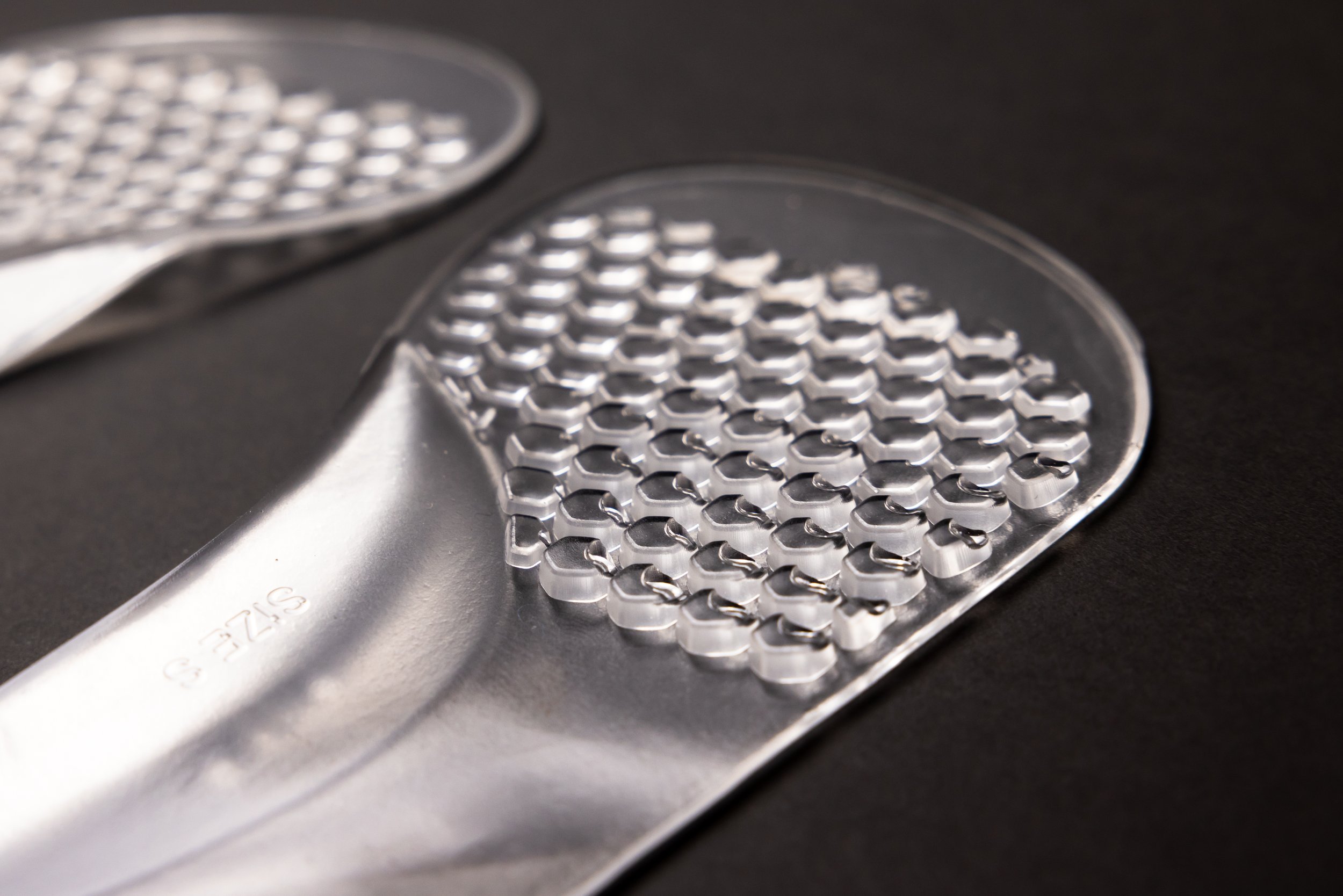
Our revolutionary high heel science.
Our High Heel Pain Research.
Lab coats on, ladies! It’s time to learn the science of footwear.
In a nutshell, the windlass mechanism (a widely researched and taught biomechanical principle) is responsible for raising your foot’s arch when your weight is loaded onto your big toe, creating a rigid lever to propel your foot forwards.
When you wear heels higher than 4cm (1.5 inches), most of your weight is distributed through the front of your foot, (like if you were doing a calf raise exercise) and the windlass mechanism is activated.
The windlass mechanism causes your foot to roll outwards (sickling, in ballet terms). This means that your leg muscles have to work harder to stabilise your ankle and maintain equilibrium through your foot. Here comes the burn! The higher your heels, the harder your muscles have to work and the more quickly they tire.
Once the muscles around your calves, ankles, and feet begin to fatigue, your toes will start to grip your shoes for stability. This is when you enter the danger zone for ankle injuries and long-term deformities.
Our High Heel Pain Solution.
Up until now, insole companies have applied the same misguided support strategy from flat shoes to high heels: supporting inner arch and providing lifeless cushioning to the ball of the foot. But traditional arch support only adds to rolling out issues, amplifying the windlass mechanism effect.
Our unique patented design incorporates all of our findings to focus support on the outside of the foot, stabilising the outside ankle while simultaneously reducing muscle fatigue. The slim-line lateral wedging keeps your feet and ankles in their neutral alignment, preventing rollout (sickle), overload, and muscle fatigue, all while keeping your stride glamorous!
With 8/10 women suffering in high heels, we knew there had to be a scientific answer! With the research to back us up, you can rest assured that our HEXAGEL x MEDIGEL formula can take you from morning, to midnight and prepare your feet for a well-travelled future.
HERE’S HOW IT WORKS:
Our patented MEDIGEL® support is scientifically-engineered to improve posture, 10x stamina & comfort, all whilst reducing the likelihood of ankle injuries & nasty toe deformities.
We surveyed 240 women & they report lasting an average of 10x longer in their favourite heels with EB HEELS, when compared with other insoles or without insoles.
“Really happy with my shoe inserts for heels. They make such a difference, I’m coming home from work not in pain after wearing them all day.”
— M. Armanasco, Sydney





